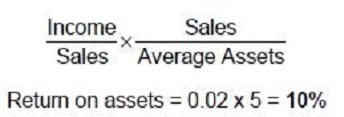Exam Details
Exam Code
:BUSINESS-ENVIRONMENT-AND-CONCEPTSExam Name
:Certified Public Accountant (Business Environment amd Concepts)Certification
:Test Prep CertificationsVendor
:Test PrepTotal Questions
:530 Q&AsLast Updated
:Aug 05, 2025
Test Prep Test Prep Certifications BUSINESS-ENVIRONMENT-AND-CONCEPTS Questions & Answers
-
Question 1:
Williams, Inc. is interested in measuring its overall cost of capital and has gathered the following data. Under the terms described below, the company can sell unlimited amounts of all instruments.
•
Williams can raise cash by selling $1,000, 8 percent, 20-year bonds with annual interest payments. In selling the issue, an average premium of $30 per bond would be received, and the firm must pay floatation costs of $30 per bond. The after-tax cost of funds is estimated to be 4.8 percent.
•
Williams can sell 8 percent preferred stock at par value, $105 per share. The cost of issuing and selling the preferred stock is expected to be $5 per share.
•
Williams' common stock is currently selling for $100 per share. The firm expects to pay cash dividends of $7 per share next year, and the dividends are expected to remain constant. The stock will have to be underpriced by $3 per share, and floatation costs are expected to amount to $5 per share.
•
Williams expects to have available $100,000 of retained earnings in the coming year; once these retained earnings are exhausted, the firm will use new common stock as the form of common stock equity financing.
•
Williams' preferred capital structure is:
Long-term debt 30% Preferred stock 20 Common stock 50
The cost of funds from retained earnings for Williams, Inc. is:
A. 7.0 percent.
B. 7.4 percent.
C. 8.1 percent.
D. 7.8 percent.
-
Question 2:
The following information pertains to Quest Co.'s Gold Division for 1993:

Quest's return on investment was: A. 10.00 percent.
B. 13.33 percent.
C. 27.50 percent.
D. 30.00 percent.
-
Question 3:
Select Co. had the following 1994 financial statement relationships:
Asset turnover 5 Profit margin on sales 0.02
What was Select's 1994 percentage return on assets?
A. 0.1 percent.
B. 0.4 percent.
C. 2.5 percent.
D. 10.0 percent.
-
Question 4:
The following selected data pertain to the Darwin Division of Beagle Co. for 1994:

What was Darwin's 1994 residual income?
A. $0
B. $4,000
C. $10,000
D. $30,000
-
Question 5:
One approach to measuring divisional performance is return on investment. Return on investment is expressed as operating income:
A. Divided by the current year's capital expenditures plus cost of capital.
B. Divided by fixed assets.
C. Divided by current assets.
D. Divided by total assets.
-
Question 6:
The imputed interest rate used in the residual income approach to performance evaluation can best be described as the:
A. Historical weighted average cost of capital for the company.
B. Target return on investment set by the company's management.
C. Average return on investments for the company over the last several years.
D. Marginal after-tax cost of capital on new equity capital.
-
Question 7:
Managerial performance can be measured in many different ways including return on investment (ROI) and residual income (RI). A good reason for using RI instead of ROI is that:
A. RI can be computed without regard to identifying an investment base.
B. Goal congruence is more likely to be promoted by using RI.
C. RI is well understood and often used in the financial press.
D. ROI does not take into consideration both the investment turnover ratio and return-on-sales percentage.
-
Question 8:
Micro Manufacturers uses a performance reporting system that combines both financial and nonfinancial measures to evaluate division performance. All of the following measure operational efficiency, except:
A. Operating leverage.
B. Days' sales in accounts receivables.
C. Inventory turnover.
D. Residual income.
-
Question 9:
The selection of the denominator in the return on investment (ROI) formula is critical to the measure's effectiveness. Which denominator is criticized because it combines the effects of operating decisions made
at one level of the organization with financing decisions made at another organization level?
A. Total assets available.
B. Total assets employed.
C. Working capital plus other assets.
D. Shareholder's equity.
-
Question 10:
Of the following items, the one item that would not be considered in evaluating the adequacy of the budgeted annual operating income for a company is:
A. Return on assets.
B. Long-range profit objectives.
C. Industry average for earnings on sales.
D. Internal rate of return.
Related Exams:
AACD
American Academy of Cosmetic DentistryACLS
Advanced Cardiac Life SupportASSET
ASSET Short Placement Tests Developed by ACTASSET-TEST
ASSET Short Placement Tests Developed by ACTBUSINESS-ENVIRONMENT-AND-CONCEPTS
Certified Public Accountant (Business Environment amd Concepts)CBEST-SECTION-1
California Basic Educational Skills Test - MathCBEST-SECTION-2
California Basic Educational Skills Test - ReadingCCE-CCC
Certified Cost Consultant / Cost Engineer (AACE International)CGFNS
Commission on Graduates of Foreign Nursing SchoolsCLEP-BUSINESS
CLEP Business: Financial Accounting, Business Law, Information Systems & Computer Applications, Management, Marketing
Tips on How to Prepare for the Exams
Nowadays, the certification exams become more and more important and required by more and more enterprises when applying for a job. But how to prepare for the exam effectively? How to prepare for the exam in a short time with less efforts? How to get a ideal result and how to find the most reliable resources? Here on Vcedump.com, you will find all the answers. Vcedump.com provide not only Test Prep exam questions, answers and explanations but also complete assistance on your exam preparation and certification application. If you are confused on your BUSINESS-ENVIRONMENT-AND-CONCEPTS exam preparations and Test Prep certification application, do not hesitate to visit our Vcedump.com to find your solutions here.


